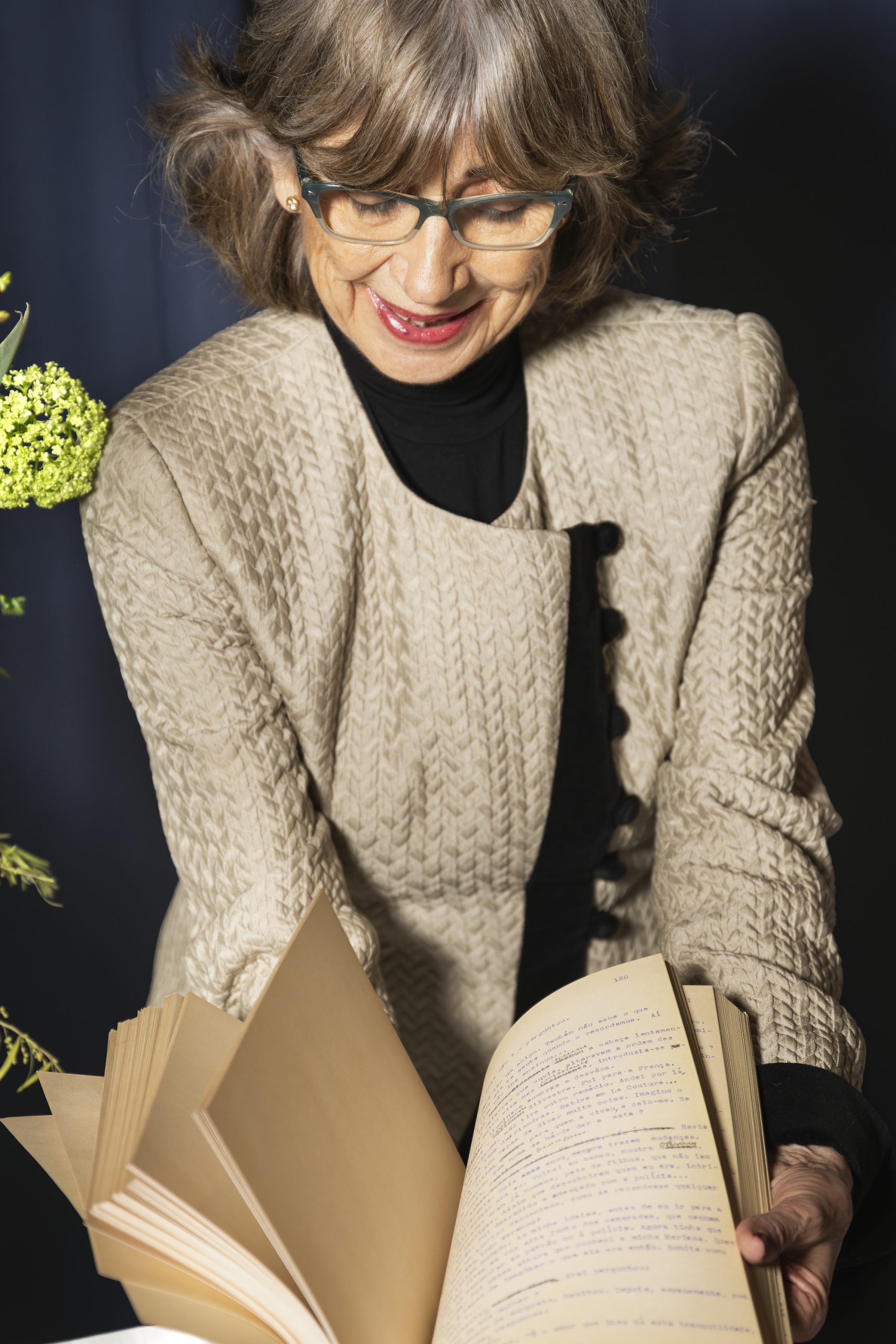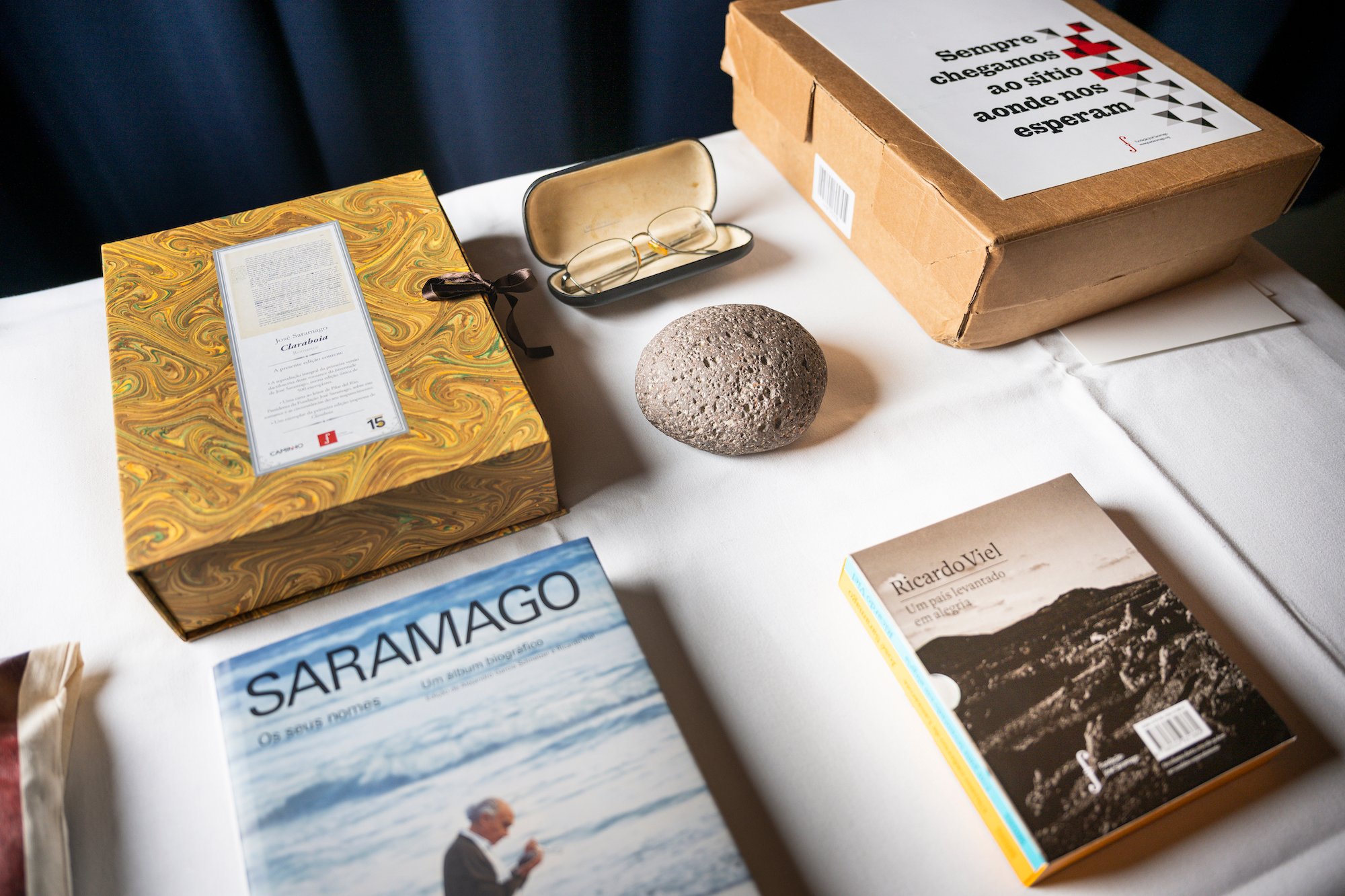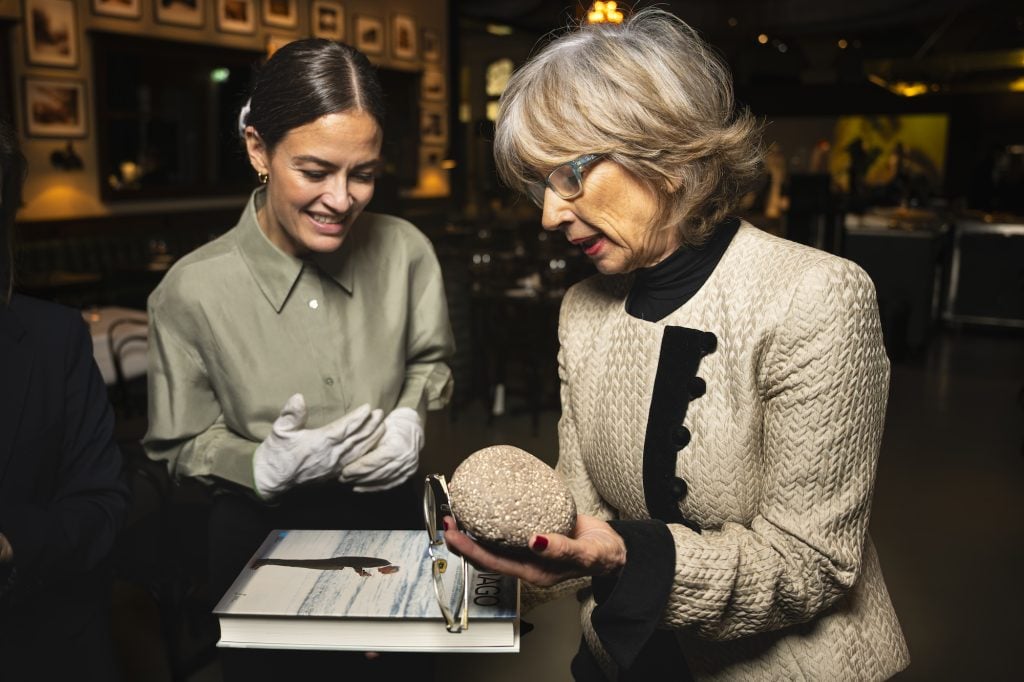A stone, a pair of glasses and a manuscript. These were some of the artefacts that were donated to the Nobel Prize Museum by the José Saramago Foundation in late February. On 8 March, the Nobel Prize Museum’s new exhibition These things changed the world will be inaugurated, with over 250 objects donated by laureates over the years.
The José Saramago Foundation and Pilar del Río, José Saramago’s widow, have selected and donated several objects to the Nobel Prize Museum. These included a pair of his glasses.
“Through these glasses, Saramago looked at the world, its history, the people we are – men and women,” Pilar del Río explained.
A stone that had been important to Saramago was also donated to the museum. Pilar del Río said that her husband had tried to describe people as statues up until the 1995 novel “Blindness”, but after that he became more and more interested in stone, i.e. the material that statues are made of. The stone that was handed over to the museum was found by Saramago on a beach in Lanzarote, one of the Canary Islands.
“José Saramago’s artefacts give us the opportunity to tell his story in new ways, and with new life,” says Erika Lanner, Director of the Nobel Prize Museum. “They can also inspire future generations.”
Another part of the donation is a manuscript from Saramago’s early years, with all notes and corrections intact. It was rejected but was published posthumously 40 years later.

The donation of these personal artefacts fulfilled a promise made by José Saramago in 2004 and was made possible by Pilar del Río and the José Saramago Foundation, with the support of Camões Institute and Instituto Cervantes.
The author José Saramago was born in 1922 in Azinhaga, Portugal and died in 2010 in Lanzarote, Spain. He was awarded the Nobel Prize in Literature in 1998. The prize motivation says that Saramago: “with parables sustained by imagination, compassion and irony continually enables us once again to apprehend an elusory reality”.

